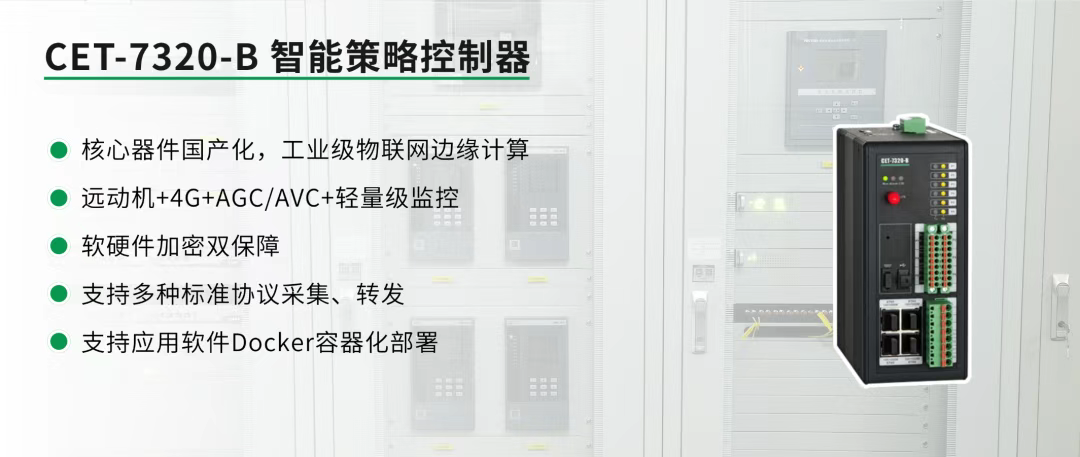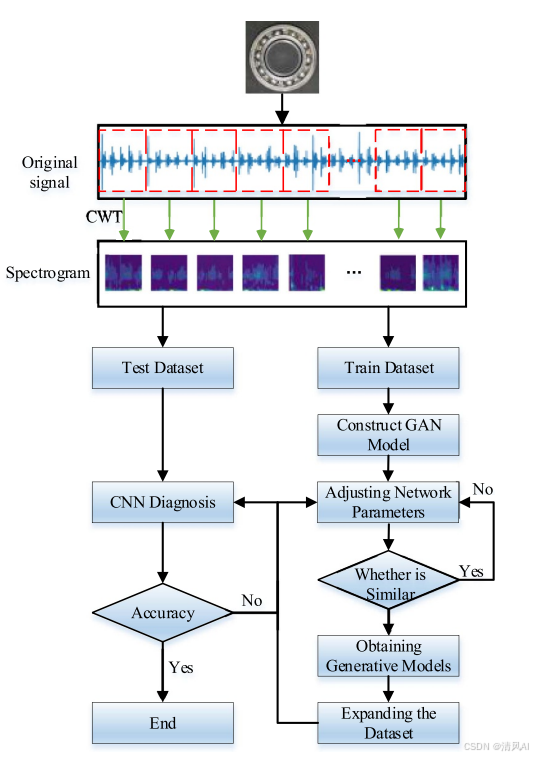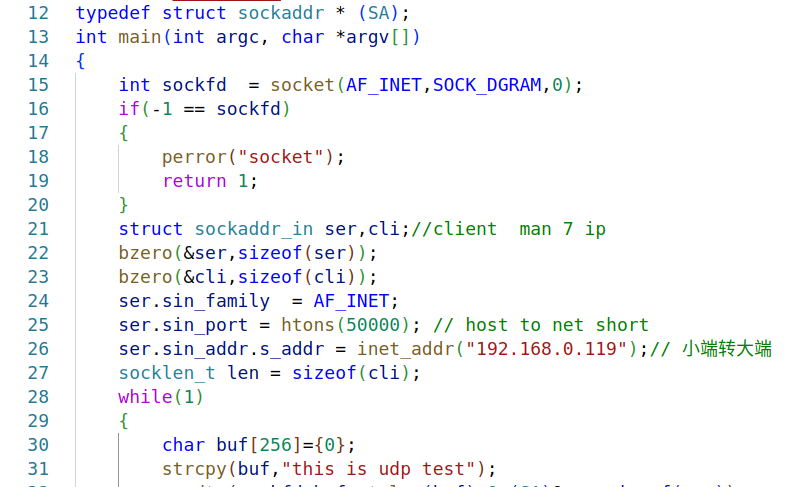GO语言基础面试题
一、字符串和整型怎么相互转换
1、使用 strconv 包中的函数 FormatInt 、ParseInt 等进行转换
2、转换10进制的整形时,可以使用 strconv.Atoi、strconv.Itoa:
Atoi是ParseInt(s, 10, 0) 的简写
Itoa是FormatInt(i, 10) 的简写
3、整形转为字符型时,可以使用 fmt.Sprintf 函数
4、注意:字符串和整形相互转换时,GO不支持强制类型转换,如string(10)、int("10")
package mainimport ("fmt""strconv"
)func main() {// FormatInt 返回100的10进制的字符串表示fmt.Println(strconv.FormatInt(100, 10)) // 输出:100// FormatInt 返回100的2进制的字符串表示fmt.Println(strconv.FormatInt(100, 2)) // 输出:1100100// ParseInt 将字符串转换为int64num, _ := strconv.ParseInt("100", 10, 64)fmt.Printf("ParseInt 转为的10进制int64: %d \n", num) // ParseInt 转为的10进制int64: 100// Itoa 将int以10进制方式转换为字符串,相当于 FormatInt(i, 10)fmt.Println(strconv.Itoa(20)) // 输出:20// Itoa 将字符串以10进制方式转换整型,相当于 ParseInt(s, 10, 0)num2, _ := strconv.Atoi("20")fmt.Println("Atoi 将字符串转为10进制整型:", num2) // 输出:Atoi 将字符串转为10进制整型: 20// 使用 fmt.Sprintf 将整形格式化为字符串str := fmt.Sprintf("%d", 200)fmt.Println(str) // 输出: 200
}
二、GO如何获取当前时间并格式化
使用 time 包中的函数:
time.Now().Format("2006-01-02 15:04:05")
三、怎么删除切片中的一个元素
1、使用 append() 函数进行追加
append(s[:index], s[index+1:]...) // index 为需要删除的元素的索引
2、使用 copy() 函数复制元素
// 切片长度减一
slice = slice[:len(slice)-1]// 使用copy函数将index之后的元素向前移动一位
copy(slice[index:], slice[index+1:])注意:切片本身没有delete方法
package mainimport ("fmt"
)func main() {// 删除切片中的元素的两种方法// 方式一:使用 append 函数// 原始切片s1 := []int{2, 3, 5, 7, 11, 13}fmt.Printf("原始切片长度: %d 容量:%d\n", len(s1), cap(s1)) // 输出:原始切片长度: 6 容量:6fmt.Println("原始切片内容:", s1) // 输出:原始切片内容: [2 3 5 7 11 13]// 删除切片中的第2个元素,即数字 3s1 = append(s1[:1], s1[2:]...) // 注意:s1[2:]...表示切片中的第3个元素到最后一个元素fmt.Printf("删除后的切片长度: %d 容量:%d\n", len(s1), cap(s1)) // 输出:删除后的切片长度: 5 容量:6//s1 = s1[:cap(s1)] // 将新切片的长度设为原始容量,则会输出 [2 5 7 11 13]fmt.Println("删除后的切片内容:", s1) // 输出:删除后的切片内容: [2 5 7 11 13]//注意:append 函数会返回一个新生产的切片,新切片中的长度会发生改变,容量、指向底层数组的指针也可能会变// 方式二:使用copy函数s := []int{2, 3, 5, 7, 11, 13}copy(s[1:], s[2:]) // 第2个元素之后的元素复制到第1个元素fmt.Println("使用copy函数后切片的内容:", s) // 输出:使用copy函数后切片的内容: [2 5 7 11 13 13]// 注意:如果不将切片的长度减1,则出现上面的结果( [2 5 7 11 13 13]),// 因为copy函数只是复制元素(复制元素的个数取决于源切片和目标切片中最小的个数),并不改变切片的长度、容量等,// 切片底层的数组的个数还是 6,最后一个的值还是13// 所以需要将原切片 s 的长度减1s = s[:len(s)-1]fmt.Println("长度减1后切片的内容:", s) // 输出:使用copy函数后切片的内容: [2 5 7 11 13]
}
四、map的key可以是哪些类型
key 的数据类型必须为可比较的类型,slice、map、func不可比较
五、如果只对map读取,需要加锁吗
map 在并发情况下,只读是线程安全的,不需要加锁,同时读写是线程不安全的。
如果想实现并发线程安全有两种方法:
- map加互斥锁或读写锁
- 标准库sync.map
sync.Map 使用方法:
package mainimport ("fmt""sync"
)func main() {var m map[string]int// 报错:assignment to entry in nil map// 原因:未对 map 进行初始化//m["test"] = 5fmt.Println(m["name"]) // 输出:0// 对 map 进行初始化clients := make(map[string]string, 0)clients["John"] = "Doe"fmt.Println(clients) // 输出:map[John:Doe]var sm sync.Map// 写入 sync.Map sync.Map 写入前不需要进行初始化sm.Store("name", "John") // 不支持以下赋值方式: sm["yy"] = "66"sm.Store("surname", "Doe")sm.Store("nickname", "li")// 读取 sync.Mapfmt.Println(sm.Load("name")) // 输出:John true// 删除 sync.Mapsm.Delete("name")// 读取 sync.Mapfmt.Println(sm.Load("name")) // 输出:<nil> false// 循环 sync.Mapsm.Range(func(key any, value any) bool {fmt.Printf("Key=%s value=%s \n", key, value)return true}) // 输出:Key=nickname value=li// Key=surname value=Doe
}
六、go协程中使用go协程,内层go协程panic后,会影响外层go协程吗
会影响,而且外层go协程中的recover对内层的panic不起作用

七、如果有多个协程,怎么判断多个协程都执行完毕
1、使用 sync.WaitGroup
2、使用 channel 同步
3、使用 context 和 sync.WaitGroup, 处理超时或取消操作
- 使用 sync.WaitGroup
package mainimport ("fmt""sync""time"
)func worker(id int, wg *sync.WaitGroup) {defer wg.Done()fmt.Printf("Worker %d starting \n", id)time.Sleep(2 * time.Second)fmt.Printf("Worker %d done \n", id)
}// 如何判断多个go协程都执行完成
func main() {var wg sync.WaitGroup// 启动 5 个协程for i := 1; i <= 5; i++ {wg.Add(1)go worker(i, &wg)}// 等待所有的 worker 完成wg.Wait()time.Sleep(time.Second)fmt.Println("All workers done")// 最终输出:// Worker 1 starting// Worker 5 starting// Worker 2 starting// Worker 3 starting// Worker 4 starting// Worker 2 done// Worker 4 done// Worker 5 done// Worker 3 done// Worker 1 done// All workers done
}
- 使用 channel 同步
package mainimport ("fmt""time"
)// 定义一个计数器管道
var channelDone = make(chan bool)func woker(id int) {fmt.Printf("worker %d starting \n", id)time.Sleep(time.Second)fmt.Printf("worker %d done \n", id)channelDone <- true // 当任务执行完成时,将 true 写入到管道
}func main() {// 启动 3 个 go 协程go woker(1)go woker(2)go woker(3)// 循环从计数器管道中读取完成标识for i := 0; i < 3; i++ {<-channelDone}fmt.Println("All workers done")// 输出:// worker 2 starting// worker 1 starting// worker 3 starting// worker 3 done// worker 2 done// All workers done
}
- 使用 context 和 sync.WaitGroup
package mainimport ("context""fmt""sync""time"
)func worker(id int, wg *sync.WaitGroup, ctx context.Context) {defer wg.Done()fmt.Printf("Worker %d starting \n", id)time.Sleep(2 * time.Second)select {case <-ctx.Done():fmt.Printf("worker %d cancelled \n", id)default:fmt.Printf("Worker %d done \n", id)}
}// 如何判断多个go协程都执行完成
func main() {var wg sync.WaitGroup// 创建一个带有2秒超时的上下文ctx, cancel := context.WithTimeout(context.Background(), 2*time.Second)// 确保在函数返回时释放资源defer cancel()// 启动 5 个协程for i := 1; i <= 5; i++ {wg.Add(1)go worker(i, &wg, ctx)}// 等待所有的 worker 完成wg.Wait()time.Sleep(time.Second)fmt.Println("All workers done")// 最终输出:// Worker 5 starting// Worker 2 starting// Worker 1 starting// Worker 3 starting// Worker 4 starting// Worker 4 done// Worker 1 done// worker 5 cancelled// worker 3 cancelled// Worker 2 done// All workers done
}
八、一个协程每隔1秒执行一次任务,如何实现
1、使用 time.Timer 实现单一定时器
2、使用 time.Ticker 实现周期性定时器
package mainimport ("fmt""time"
)func main() {// 1、用 time.Timer 实现单一的定时器,用它来在一段时间后执行一个任务// 创建一个定时器,设置 1 秒后触发timer := time.NewTimer(1 * time.Second)// 阻塞等待定时器触发<-timer.Cfmt.Println("定时任务被执行")// 停止定时器timer.Stop()// 2、time.Ticker 类型表示一个周期性的定时器,它会按照指定的间隔不断触发ticker := time.NewTicker(1 * time.Second)defer ticker.Stop() // 确保在不需要时,停止 ticker// 用管道控制 ticker 结束,简单运行 5 次后结束done := make(chan bool)go func() {for i := 0; i < 5; i++ {select {case <-done:returncase t := <-ticker.C:fmt.Println("定时任务执行,当前时间:", t)}}done <- true}()// 主线程等待一段时间time.Sleep(7 * time.Second)
}
九、分库分表
- 分表:
原因:数据库面临性能瓶颈或数据量很大,通过优化索引也无法解决
解决方法:将数据分散到多个表,通常采用横向拆分,具体策略:
①通过id取余将数据分散到多个表里;
②哈希分表策略,根据表的某个属性值获取哈希值进行分表;
③通过时间分表方式,按月或年将数据拆分到不同的表
注意:垂直拆分,比如将用户表拆分为主副表,最好在设计初期做,不然拆分代价大
- 分库:
原因:单库的访问量过高
解决方法:搭配微服务框架,按驱动领域设计(DDD)将业务表归属到不同的数据库,专库专用,提供系统稳定性,降低耦合度
十、channel 在什么情况下会出现死锁
1、对于无缓存双向管道,只向管道中写数据,不从管道中读数据;或只读不写
2、对于有缓存管道,向管道中添加数据超过缓存
3、select的所有case分支都不能执行,且没有default分支
4、对没有初始化的channel写数据
package mainimport ("fmt""time"
)func main() {// 创建缓存为2的的channelch := make(chan int, 2)// 向管道中添加3个数据,超过缓存数 2,出现死锁ch <- 3ch <- 4ch <- 5time.Sleep(time.Second * 1)fmt.Println("main end")// 输出:// fatal error: all goroutines are asleep - deadlock!// goroutine 1 [chan send]:// main.main()// E:/GoProject/src/mianshi/channel/main.go:22 +0x58// exit status 2
}
十一、在什么情况下关闭channel会panic
1、当channel为nil时
2、当channel已经关闭时
十二、channel的底层实现原理(数据结构)
type hchan struct {qcount uint // total data in the queuedataqsiz uint // size of the circular queuebuf unsafe.Pointer // points to an array of dataqsiz elementselemsize uint16closed uint32elemtype *_type // element typesendx uint // send indexrecvx uint // receive indexrecvq waitq // list of recv waiterssendq waitq // list of send waiters// lock protects all fields in hchan, as well as several// fields in sudogs blocked on this channel.//// Do not change another G's status while holding this lock// (in particular, do not ready a G), as this can deadlock// with stack shrinking.lock mutex
}type waitq struct {first *sudoglast *sudog
}向channel写数据(流程图来自go进阶(2) -深入理解Channel实现原理-CSDN博客):
1、锁定整个通道结构。
2、确定写入:如果recvq队列不为空,说明缓冲区没有数据或者没有缓冲区,此时直接从recvq等待队列中取出一个G(goroutine),并把数据写入,最后把该G唤醒,结束发送过程;
3、如果recvq为Empty,则确定缓冲区是否可用。如果可用,从当前goroutine复制数据写入缓冲区,结束发送过程。
4、如果缓冲区已满,则要写入的元素将保存在当前正在执行的goroutine的结构中,并且当前goroutine将在sendq中排队并从运行时挂起(进入休眠,等待被读goroutine唤醒)。
5、写入完成释放锁。

从channel读数据:
1、先获取channel全局锁
2、如果等待发送队列sendq不为空(有等待的goroutine):
1)若没有缓冲区,直接从sendq队列中取出G(goroutine),直接取出goroutine并读取数据,然后唤醒这个goroutine,结束读取释放锁,结束读取过程;
2)若有缓冲区(说明此时缓冲区已满),从缓冲队列中首部读取数据,再从sendq等待发送队列中取出G,把G中的数据写入缓冲区buf队尾,结束读取释放锁;
3、如果等待发送队列sendq为空(没有等待的goroutine):
1)若缓冲区有数据,直接读取缓冲区数据,结束读取释放锁。
2)没有缓冲区或缓冲区为空,将当前的goroutine加入recvq排队,进入睡眠,等待被写goroutine唤醒。结束读取释放锁。

十三、go中的锁机制
锁机制是并发编程中用于确保数据一致性和防止竞争条件(race conditions)的重要工具。Go 提供了几种不同的锁机制,包括互斥锁(Mutex)、读写锁(RWMutex)和通道(Channels)。
1、互斥锁(sync.Mutex)
确保同一时间只有一个 goroutine 可以访问某个资源
2、读写锁(sync.RWMutex)
读写锁允许多个 goroutine 同时读取资源,但在写入资源时会独占访问权。这提高了读操作的并发性能。
3、通道
通道不是传统意义上的锁,但它们提供了一种更 Go 风格的并发控制机制,用于在 goroutine 之间传递数据。通道可以用于实现同步和互斥,避免使用显式的锁。
package main import ( "fmt" "sync"
) var ( counter int mu sync.Mutex
) func increment(wg *sync.WaitGroup) { defer wg.Done() mu.Lock() counter++ mu.Unlock()
} func main() { var wg sync.WaitGroup for i := 0; i < 1000; i++ { wg.Add(1) go increment(&wg) } wg.Wait() fmt.Println("Final Counter:", counter)
}package main import ( "fmt" "sync"
) var ( data int rwMu sync.RWMutex
) func readData(wg *sync.WaitGroup) { defer wg.Done() rwMu.RLock() fmt.Println("Read:", data) rwMu.RUnlock()
} func writeData(wg *sync.WaitGroup, value int) { defer wg.Done() rwMu.Lock() data = value rwMu.Unlock()
} func main() { var wg sync.WaitGroup // 启动多个读 goroutine for i := 0; i < 10; i++ { wg.Add(1) go readData(&wg) } // 启动一个写 goroutine wg.Add(1) go writeData(&wg, 42) wg.Wait()
}package mainimport ("fmt""sync"
)func worker(id int, jobs <-chan int, results chan<- int, wg *sync.WaitGroup) {defer wg.Done()for j := range jobs {fmt.Printf("Worker %d started job %d\n", id, j)results <- j * 2}
}func main() {const numJobs = 5jobs := make(chan int, numJobs)results := make(chan int, numJobs)var wg sync.WaitGroup// 启动 3 个 worker goroutinefor w := 1; w <= 3; w++ {wg.Add(1)go worker(w, jobs, results, &wg)}// 发送 5 个 job 到 jobs 通道for j := 1; j <= numJobs; j++ {jobs <- j}close(jobs)// 等待所有 worker 完成go func() {wg.Wait()close(results)}()// 打印所有结果for result := range results {fmt.Println("Result:", result)}// 打印结果:// Worker 1 started job 1// Worker 1 started job 4// Worker 1 started job 5// Worker 2 started job 2// Result: 2// Result: 8// Worker 3 started job 3// Result: 10// Result: 4// Result: 6
}十四、互斥锁的底层实现原理
互斥锁(sync.Mutex)是一种用于同步并发访问共享资源的机制,它确保在同一时刻只有一个goroutine可以访问被保护的数据。
// 位于 src/sync/mutex.gotype Mutex struct {state int32 // 锁状态和一些标志位sema uint32 // 信号量,用于阻塞和唤醒等待的 goroutine
}const (mutexLocked = 1 << iota // 是否被锁定 mutexWoken // 是否有协程被唤醒mutexStarving // 是否处于饥饿模式mutexWaiterShift = iota // 表示等待锁的阻塞协程个数starvationThresholdNs = 1e6
)



十五、go内存逃逸现象
1、什么是内存逃逸
当一个函数内部定义的变量在函数执行完后仍然被其他部分引用时,这个变量就会逃逸到堆上分配内存,而不是在栈上分配,这种现象叫做内存逃逸。
对内存管理的理解:
栈上的内存分配和释放由编译器自动管理,速度快但空间有限;
堆上的内存分配和释放需要运行时系统的参与,相对较慢但空间大,由GC回收
2、内存逃逸的原因
- 变量的生命周期超出作用域:
在函数内部声明的变量,如果在函数返回后仍然被引用,就会导致内存逃逸。这些变量将被分配到堆上,以确保它们在函数返回后仍然可用。
- 引用外部变量:
如果函数内部引用了外部作用域的变量,这也可能导致内存逃逸。编译器无法确定这些外部变量的生命周期,因此它们可能会被分配到堆上。
- 使用闭包:
在Go中,闭包(函数值)可以捕获外部变量,这些变量的生命周期可能超出了闭包本身的生命周期。这导致了内存逃逸。
- 返回局部变量地址:
当一个函数返回一个局部变量的指针或引用时,这个变量就会逃逸到函数外部。
- 大对象分配:
由于栈上的空间有限,大对象无法在栈上得到足够的空间,因此可能导致逃逸到堆上
3、如何检测及避免内存逃逸
- 使用逃逸分析工具:
Go编译器内置了逃逸分析功能,可以帮助开发者检测内存逃逸。可以使用go build命令的-gcflags标志来启用逃逸分析并输出逃逸分析的结果。这会在编译时打印出逃逸分析的详细信息,包括哪些变量逃逸到堆上以及原因。
- 减小变量作用域:
将变量的作用域限制在最小的范围内,确保变量在不再需要时尽早被销毁。这有助于减少内存逃逸的可能性。
- 避免使用全局变量:
全局变量的生命周期持续到程序结束,通常会导致内存逃逸。因此,应尽量避免过多使用全局变量。
- 优化闭包使用:
如果不必要,避免使用闭包来捕获外部变量。如果必须使用闭包,可以考虑将需要的变量作为参数传递,而不是捕获外部变量。
- 使用值类型:
在某些情况下,将数据保存为值类型而不是引用类型(指针或接口)可以减少内存逃逸。值类型通常在栈上分配,生命周期受限于作用域。
- 避免在循环中创建对象:
在循环中创建对象可能导致大量内存分配和逃逸。可以在循环外部预分配好对象,循环内部重复使用。
// 1、函数内部定义的局部变量逃逸,比如返回参数是指针、切片、map
func createSlice() []int { var data []int for i := 0; i < 1000; i++ { data = append(data, i) } return data // data逃逸到堆上分配内存
}// 2、闭包捕获外部变量
func counter() func() int { count := 0 return func() int { count++ return count } // count逃逸到堆上
}// 3、返回局部变量地址
func escape() *int { x := 10 return &x // x逃逸到堆上
}// 4、使用go关键字启动协程
func main() { data := make([]int, 1000) go func() { fmt.Println(data[0]) // data逃逸到堆上 }()
}// 5、向channel中发送指针或包含指针的值
func f1() {i :=2ch = make(chan *int, 2)ch <- &i<-ch
}// 6、函数内的变量定义为interface
// 编译器不确定 interface 的大小,所以将变量分配在堆上
type animal interface {run()
}func f2() {var a animal
}
十六、高并发情况下如何保证数据库主键唯一性
数据库层面:
主键唯一约束、数据库事务和锁
应用程序层面:
UUID、雪花算法
十七、GMP调度模型的原理
Go语言的调度模型被称为GMP模型,用于在可用的物理线程上调度goroutines(Go的轻量级线程)。
GMP模型组成:
GMP模型由三个主要组件构成:Goroutine、M(机器)和P(处理器)。
1. Goroutine(G)
- Goroutine 是Go语言中的一个基本概念,类似于线程,但比线程更轻量。Goroutines在Go的运行时环境中被调度和管理,而非操作系统。
- Goroutines非常轻量,启动快,且切换开销小。这是因为它们有自己的栈,这个栈可以根据需要动态增长和缩减。
2. Machine(M)
- M 代表了真正的操作系统线程。每个M都由操作系统调度,并且拥有一个固定大小的内存栈用于执行C代码。
- M负责执行Goroutines的代码。Go的运行时会尽量复用M,以减少线程的创建和销毁带来的开销。
3. Processor(P)
- P 是Go运行时的一个资源,可以看作是执行Goroutines所需的上下文环境。P的数量决定了系统同时运行Goroutines的最大数量。
- 每个P都有一个本地的运行队列,用于存放待运行的Goroutines。
- P的数量一般设置为等于机器的逻辑处理器数量,以充分利用多核的优势。
调度过程:
- 当一个goroutine被创建时,它会被放入某个P的本地队列中等待执行。
- 当一个M执行完当前绑定的P中的goroutine后,它会从该P的本地队列中获取下一个待执行的goroutine。
- 如果P的本地队列为空,M会尝试从全局队列或其他P的队列中“偷取”goroutine来执行,以实现工作负载的均衡,提高线程利用率。
- 如果当前没有足够活跃的M来处理所有的P,调度器会创建新的M与P绑定,以充分利用多核资源。
调度的机制用一句话描述就是:runtime准备好G,M,P,然后M绑定P,M从本地或者是全局队列中获取G,然后切换到G的执行栈上执行G上的任务函数,调用goexit做清理工作并回到M,如此反复。
work stealing机制:
Hand off 机制:
也称为P分离机制,当本线程M因为G进行的系统调用阻塞时,线程释放绑定的P,把P转移给其他空闲的M执行,也提高了线程利用率(避免站着茅坑不拉shi)。
抢占式调度:
十八、go常用的并发模型有哪些
并发模型是指系统中的线程如何协作完成并发任务,包含两种并发模型:共享内存并发模型、CSP并发模型。
线程间的通讯方式有两种:共享内存、消息传递
十九、go Cond实现原理
Cond 是一种用于线程间同步的机制,可以让gorutine在满足特定条件时被阻塞或唤醒。
数据结构:
type Cond struct {noCopy noCopyL Lockernotify notifyListchecker copyChecker }type notifyList struct {wait uint32notify uint32lock uintptr // key field of the mutexhead unsafe.Pointertail unsafe.Pointer }
package mainimport ("fmt""sync""time" )func main() {// 定义一个互斥锁var mu sync.Mutex// 创建cond,用于gorutine在满足特定条件时被阻塞或唤醒c := sync.NewCond(&mu)go func() {// 调用 wait() 方法前需要加锁,因为 wait() 方法内部首先会解锁,不在外层加锁,会报错c.L.Lock()defer c.L.Unlock()c.Wait() // 阻塞等待被唤醒fmt.Println("Goroutine 1: 条件满足,继续执行")}()// Goroutine 2: 等待条件变量go func() {c.L.Lock()defer c.L.Unlock()c.Wait()fmt.Println("Goroutine 2: 条件满足,继续执行")}()time.Sleep(time.Second * 2)// 唤醒一个gorutine, 可以不用加锁//c.Signal()// 唤醒等待的所有 gorutine, 可以不用加锁c.Broadcast()time.Sleep(time.Second * 2) }
二十、map的使用及底层原理
1、map的初始化
①make函数分配内存
clients := make(map[string]string) // 默认容量为0 clients := make(map[string]string, 10) // 指定初始容量为10// 注意:如果直接使用new,还得再使用make,因为make会初始化内部的哈希表结构②直接定义map并赋值
clients := map[string]string{"test": "test","yy": "yy", }2、读map
// 方式1 name := clients["name"]// 方式2 name, ok := clients["name"] if ok {fmt.Println(name) // 输出: } else {fmt.Println("Key not found") }3、写map
// 如果map未初始化,直接写,会报错:panic: assignment to entry in nil map clients["name"] = "test"4、删map
// 如果map未初始化或key不存在,则删除方法直接结束,不会报错 delete(clients, "name")5、遍历map
// 前后两次遍历,key值顺序可能不一样 for k, v := range clients {fmt.Printf("Key=%s value=%s \n", k, v) }6、map底层数据结构
//src/runtime/map.go// A header for a Go map. type hmap struct {// Note: the format of the hmap is also encoded in cmd/compile/internal/reflectdata/reflect.go.// Make sure this stays in sync with the compiler's definition.count int // # live cells == size of map. Must be first (used by len() builtin)flags uint8B uint8 // log_2 of # of buckets (can hold up to loadFactor * 2^B items)noverflow uint16 // approximate number of overflow buckets; see incrnoverflow for detailshash0 uint32 // hash seedbuckets unsafe.Pointer // array of 2^B Buckets. may be nil if count==0.oldbuckets unsafe.Pointer // previous bucket array of half the size, non-nil only when growingnevacuate uintptr // progress counter for evacuation (buckets less than this have been evacuated)extra *mapextra // optional fields }// mapextra holds fields that are not present on all maps. type mapextra struct {// If both key and elem do not contain pointers and are inline, then we mark bucket// type as containing no pointers. This avoids scanning such maps.// However, bmap.overflow is a pointer. In order to keep overflow buckets// alive, we store pointers to all overflow buckets in hmap.extra.overflow and hmap.extra.oldoverflow.// overflow and oldoverflow are only used if key and elem do not contain pointers.// overflow contains overflow buckets for hmap.buckets.// oldoverflow contains overflow buckets for hmap.oldbuckets.// The indirection allows to store a pointer to the slice in hiter.overflow *[]*bmapoldoverflow *[]*bmap// nextOverflow holds a pointer to a free overflow bucket.nextOverflow *bmap }// A bucket for a Go map. type bmap struct {// tophash generally contains the top byte of the hash value// for each key in this bucket. If tophash[0] < minTopHash,// tophash[0] is a bucket evacuation state instead.tophash [bucketCnt]uint8// Followed by bucketCnt keys and then bucketCnt elems.// NOTE: packing all the keys together and then all the elems together makes the// code a bit more complicated than alternating key/elem/key/elem/... but it allows// us to eliminate padding which would be needed for, e.g., map[int64]int8.// Followed by an overflow pointer. }
7、map解决哈希冲突的方式
- 拉链法:当哈希值相同时,桶中的元素通过链表的形式链接。方便简单,无需预选分配内存
- 开放寻址法:当哈希值对应的桶中存满数据时,会通过一定的探测策略继续寻找下一个桶来存放数据。无需额外的指针用于链接元素,内存地址完全连续,充分利用CPU高速缓存
8、map读流程
func mapaccess1(t *maptype, h *hmap, key unsafe.Pointer) unsafe.Pointer {if raceenabled && h != nil {callerpc := getcallerpc()pc := abi.FuncPCABIInternal(mapaccess1)racereadpc(unsafe.Pointer(h), callerpc, pc)raceReadObjectPC(t.Key, key, callerpc, pc)}if msanenabled && h != nil {msanread(key, t.Key.Size_)}if asanenabled && h != nil {asanread(key, t.Key.Size_)}// map 未初始化或键值对为0,则直接返回 0 值if h == nil || h.count == 0 {if err := mapKeyError(t, key); err != nil {panic(err) // see issue 23734}return unsafe.Pointer(&zeroVal[0])}// 有协程在写map,则抛出异常if h.flags&hashWriting != 0 {fatal("concurrent map read and map write")}hash := t.Hasher(key, uintptr(h.hash0))// 桶长度的指数左移一位再减1 hash % 2^B 等价于 hash & (2^B - 1)m := bucketMask(h.B)// 根据key的哈希值找到对应桶数组的位置 (hash&m)*uintptr(t.BucketSize)) 表示桶数组索引*单个桶的大小,获得对应桶的地址偏移量b := (*bmap)(add(h.buckets, (hash&m)*uintptr(t.BucketSize)))// 判断是否处于扩容阶段(oldbuckets不为空,则表示正处于扩容阶段)if c := h.oldbuckets; c != nil {// 如果不是等量扩容,则获取老的桶数组长度减1(m值右移1位)if !h.sameSizeGrow() {// There used to be half as many buckets; mask down one more power of two.m >>= 1}oldb := (*bmap)(add(c, (hash&m)*uintptr(t.BucketSize)))// 判断老桶中的数据是否完成迁移,如果没有完成迁移,则从老桶中取数据if !evacuated(oldb) {b = oldb}}top := tophash(hash) bucketloop:// 外层循环桶及桶链表,内层循环每个桶的8(bucketCnt)个键值对for ; b != nil; b = b.overflow(t) {for i := uintptr(0); i < bucketCnt; i++ {if b.tophash[i] != top {if b.tophash[i] == emptyRest {break bucketloop}continue}k := add(unsafe.Pointer(b), dataOffset+i*uintptr(t.KeySize))if t.IndirectKey() {k = *((*unsafe.Pointer)(k))}if t.Key.Equal(key, k) {e := add(unsafe.Pointer(b), dataOffset+bucketCnt*uintptr(t.KeySize)+i*uintptr(t.ValueSize))if t.IndirectElem() {e = *((*unsafe.Pointer)(e))}return e}}}return unsafe.Pointer(&zeroVal[0]) }9、map写流程
// src/runtime/map.gofunc mapassign(t *maptype, h *hmap, key unsafe.Pointer) unsafe.Pointer {if h == nil {panic(plainError("assignment to entry in nil map"))}if raceenabled {callerpc := getcallerpc()pc := abi.FuncPCABIInternal(mapassign)racewritepc(unsafe.Pointer(h), callerpc, pc)raceReadObjectPC(t.Key, key, callerpc, pc)}if msanenabled {msanread(key, t.Key.Size_)}if asanenabled {asanread(key, t.Key.Size_)}if h.flags&hashWriting != 0 {fatal("concurrent map writes")}hash := t.Hasher(key, uintptr(h.hash0))// Set hashWriting after calling t.hasher, since t.hasher may panic,// in which case we have not actually done a write.h.flags ^= hashWritingif h.buckets == nil {h.buckets = newobject(t.Bucket) // newarray(t.Bucket, 1)}again:bucket := hash & bucketMask(h.B)if h.growing() {growWork(t, h, bucket)}b := (*bmap)(add(h.buckets, bucket*uintptr(t.BucketSize)))top := tophash(hash)var inserti *uint8var insertk unsafe.Pointervar elem unsafe.Pointer bucketloop:for {for i := uintptr(0); i < bucketCnt; i++ {if b.tophash[i] != top {if isEmpty(b.tophash[i]) && inserti == nil {inserti = &b.tophash[i]insertk = add(unsafe.Pointer(b), dataOffset+i*uintptr(t.KeySize))elem = add(unsafe.Pointer(b), dataOffset+bucketCnt*uintptr(t.KeySize)+i*uintptr(t.ValueSize))}if b.tophash[i] == emptyRest {break bucketloop}continue}k := add(unsafe.Pointer(b), dataOffset+i*uintptr(t.KeySize))if t.IndirectKey() {k = *((*unsafe.Pointer)(k))}if !t.Key.Equal(key, k) {continue}// already have a mapping for key. Update it.if t.NeedKeyUpdate() {typedmemmove(t.Key, k, key)}elem = add(unsafe.Pointer(b), dataOffset+bucketCnt*uintptr(t.KeySize)+i*uintptr(t.ValueSize))goto done}ovf := b.overflow(t)if ovf == nil {break}b = ovf}// Did not find mapping for key. Allocate new cell & add entry.// If we hit the max load factor or we have too many overflow buckets,// and we're not already in the middle of growing, start growing.if !h.growing() && (overLoadFactor(h.count+1, h.B) || tooManyOverflowBuckets(h.noverflow, h.B)) {hashGrow(t, h)goto again // Growing the table invalidates everything, so try again}if inserti == nil {// The current bucket and all the overflow buckets connected to it are full, allocate a new one.newb := h.newoverflow(t, b)inserti = &newb.tophash[0]insertk = add(unsafe.Pointer(newb), dataOffset)elem = add(insertk, bucketCnt*uintptr(t.KeySize))}// store new key/elem at insert positionif t.IndirectKey() {kmem := newobject(t.Key)*(*unsafe.Pointer)(insertk) = kmeminsertk = kmem}if t.IndirectElem() {vmem := newobject(t.Elem)*(*unsafe.Pointer)(elem) = vmem}typedmemmove(t.Key, insertk, key)*inserti = toph.count++done:if h.flags&hashWriting == 0 {fatal("concurrent map writes")}h.flags &^= hashWritingif t.IndirectElem() {elem = *((*unsafe.Pointer)(elem))}return elem }注意:扩容包括增量扩容(k-v对数量/桶数量>6.5)和等量扩容(溢出桶数量=桶数量)
map采用渐进式扩容,每次写操作迁移一部分老数据到新桶中
10、删除map
// src/runtime/map.gofunc mapdelete(t *maptype, h *hmap, key unsafe.Pointer) {if raceenabled && h != nil {callerpc := getcallerpc()pc := abi.FuncPCABIInternal(mapdelete)racewritepc(unsafe.Pointer(h), callerpc, pc)raceReadObjectPC(t.Key, key, callerpc, pc)}if msanenabled && h != nil {msanread(key, t.Key.Size_)}if asanenabled && h != nil {asanread(key, t.Key.Size_)}if h == nil || h.count == 0 {if err := mapKeyError(t, key); err != nil {panic(err) // see issue 23734}return}if h.flags&hashWriting != 0 {fatal("concurrent map writes")}hash := t.Hasher(key, uintptr(h.hash0))// Set hashWriting after calling t.hasher, since t.hasher may panic,// in which case we have not actually done a write (delete).h.flags ^= hashWritingbucket := hash & bucketMask(h.B)if h.growing() {growWork(t, h, bucket)}b := (*bmap)(add(h.buckets, bucket*uintptr(t.BucketSize)))bOrig := btop := tophash(hash) search:for ; b != nil; b = b.overflow(t) {for i := uintptr(0); i < bucketCnt; i++ {if b.tophash[i] != top {if b.tophash[i] == emptyRest {break search}continue}k := add(unsafe.Pointer(b), dataOffset+i*uintptr(t.KeySize))k2 := kif t.IndirectKey() {k2 = *((*unsafe.Pointer)(k2))}if !t.Key.Equal(key, k2) {continue}// Only clear key if there are pointers in it.if t.IndirectKey() {*(*unsafe.Pointer)(k) = nil} else if t.Key.PtrBytes != 0 {memclrHasPointers(k, t.Key.Size_)}e := add(unsafe.Pointer(b), dataOffset+bucketCnt*uintptr(t.KeySize)+i*uintptr(t.ValueSize))if t.IndirectElem() {*(*unsafe.Pointer)(e) = nil} else if t.Elem.PtrBytes != 0 {memclrHasPointers(e, t.Elem.Size_)} else {memclrNoHeapPointers(e, t.Elem.Size_)}b.tophash[i] = emptyOne// If the bucket now ends in a bunch of emptyOne states,// change those to emptyRest states.// It would be nice to make this a separate function, but// for loops are not currently inlineable.if i == bucketCnt-1 {if b.overflow(t) != nil && b.overflow(t).tophash[0] != emptyRest {goto notLast}} else {if b.tophash[i+1] != emptyRest {goto notLast}}for {b.tophash[i] = emptyRestif i == 0 {if b == bOrig {break // beginning of initial bucket, we're done.}// Find previous bucket, continue at its last entry.c := bfor b = bOrig; b.overflow(t) != c; b = b.overflow(t) {}i = bucketCnt - 1} else {i--}if b.tophash[i] != emptyOne {break}}notLast:h.count--// Reset the hash seed to make it more difficult for attackers to// repeatedly trigger hash collisions. See issue 25237.if h.count == 0 {h.hash0 = uint32(rand())}break search}}if h.flags&hashWriting == 0 {fatal("concurrent map writes")}h.flags &^= hashWriting }11、遍历map
前后两次遍历的key顺序不一致的原因:
①遍历桶的起始节点和桶内k-v偏移量随机
②map是否处于扩容阶段也影响遍历顺序
12、map扩容
二十一、hash特性
hash又称做散列,可将任意长度的输入压缩到某一固定长度的输出,特性如下:
1、可重入性
2、离散性
3、单向性
4、哈希冲突
二十二、协程的缺点
1、协程本质上是单核的,无法充分利用多核资源
2、每个协程都有一个有限的堆栈大小
3、存在潜在死锁与资源争用
4、协程并行特性使得调试变得复杂
二十三、切片底层原理
1、切片初始化
// 切片初始化 // 1、使用make函数 make([]int, len) 或者 make([]int, len, cap) c := make([]int, 2, 4)// 2、直接初始化 d := []int{1, 2, 3}注意:make([]int, len, cap)中的[len, cap)的范围内,虽然已经分配了内存空间,但逻辑意义上不存在元素,直接访问会报数组越界(panic: runtime error: index out of range [2] with length 2)
2、底层数据结构
type slice struct {array unsafe.Pointer // 指向底层数组的起始地址len int // 长度cap int // 容量 }// src/runtime/slice.go // 初始化 slice func makeslice(et *_type, len, cap int) unsafe.Pointer {mem, overflow := math.MulUintptr(et.Size_, uintptr(cap))if overflow || mem > maxAlloc || len < 0 || len > cap {// NOTE: Produce a 'len out of range' error instead of a// 'cap out of range' error when someone does make([]T, bignumber).// 'cap out of range' is true too, but since the cap is only being// supplied implicitly, saying len is clearer.// See golang.org/issue/4085.mem, overflow := math.MulUintptr(et.Size_, uintptr(len))if overflow || mem > maxAlloc || len < 0 {panicmakeslicelen()}panicmakeslicecap()}return mallocgc(mem, et, true) }3、切片扩容
package mainimport "fmt"func main() {s := []int{1, 2, 3, 4}fmt.Printf("原始切片内容:%v 长度:%d 容量:%d 第一个元素的地址:%p \n", s, len(s), cap(s), &s[0])// 切片追加元素,会导致扩容s = append(s, 5)fmt.Printf("扩容后 切片内容:%v 长度:%d 容量:%d 第一个元素的地址:%p \n", s, len(s), cap(s), &s[0])// 输出内容:// 原始切片内容:[1 2 3 4] 长度:4 容量:4 第一个元素的地址:0xc000016160// 扩容后 切片内容:[1 2 3 4 5] 长度:5 容量:8 第一个元素的地址:0xc000010380 }
// src/runtime/slice.go 切片扩容 func growslice(oldPtr unsafe.Pointer, newLen, oldCap, num int, et *_type) slice {oldLen := newLen - numif raceenabled {callerpc := getcallerpc()racereadrangepc(oldPtr, uintptr(oldLen*int(et.Size_)), callerpc, abi.FuncPCABIInternal(growslice))}if msanenabled {msanread(oldPtr, uintptr(oldLen*int(et.Size_)))}if asanenabled {asanread(oldPtr, uintptr(oldLen*int(et.Size_)))}if newLen < 0 {panic(errorString("growslice: len out of range"))}if et.Size_ == 0 {// append should not create a slice with nil pointer but non-zero len.// We assume that append doesn't need to preserve oldPtr in this case.return slice{unsafe.Pointer(&zerobase), newLen, newLen}}newcap := nextslicecap(newLen, oldCap)var overflow boolvar lenmem, newlenmem, capmem uintptr// Specialize for common values of et.Size.// For 1 we don't need any division/multiplication.// For goarch.PtrSize, compiler will optimize division/multiplication into a shift by a constant.// For powers of 2, use a variable shift.noscan := et.PtrBytes == 0switch {case et.Size_ == 1:lenmem = uintptr(oldLen)newlenmem = uintptr(newLen)capmem = roundupsize(uintptr(newcap), noscan)overflow = uintptr(newcap) > maxAllocnewcap = int(capmem)case et.Size_ == goarch.PtrSize:lenmem = uintptr(oldLen) * goarch.PtrSizenewlenmem = uintptr(newLen) * goarch.PtrSizecapmem = roundupsize(uintptr(newcap)*goarch.PtrSize, noscan)overflow = uintptr(newcap) > maxAlloc/goarch.PtrSizenewcap = int(capmem / goarch.PtrSize)case isPowerOfTwo(et.Size_):var shift uintptrif goarch.PtrSize == 8 {// Mask shift for better code generation.shift = uintptr(sys.TrailingZeros64(uint64(et.Size_))) & 63} else {shift = uintptr(sys.TrailingZeros32(uint32(et.Size_))) & 31}lenmem = uintptr(oldLen) << shiftnewlenmem = uintptr(newLen) << shiftcapmem = roundupsize(uintptr(newcap)<<shift, noscan)overflow = uintptr(newcap) > (maxAlloc >> shift)newcap = int(capmem >> shift)capmem = uintptr(newcap) << shiftdefault:lenmem = uintptr(oldLen) * et.Size_newlenmem = uintptr(newLen) * et.Size_capmem, overflow = math.MulUintptr(et.Size_, uintptr(newcap))capmem = roundupsize(capmem, noscan)newcap = int(capmem / et.Size_)capmem = uintptr(newcap) * et.Size_}// The check of overflow in addition to capmem > maxAlloc is needed// to prevent an overflow which can be used to trigger a segfault// on 32bit architectures with this example program://// type T [1<<27 + 1]int64//// var d T// var s []T//// func main() {// s = append(s, d, d, d, d)// print(len(s), "\n")// }if overflow || capmem > maxAlloc {panic(errorString("growslice: len out of range"))}var p unsafe.Pointerif et.PtrBytes == 0 {p = mallocgc(capmem, nil, false)// The append() that calls growslice is going to overwrite from oldLen to newLen.// Only clear the part that will not be overwritten.// The reflect_growslice() that calls growslice will manually clear// the region not cleared here.memclrNoHeapPointers(add(p, newlenmem), capmem-newlenmem)} else {// Note: can't use rawmem (which avoids zeroing of memory), because then GC can scan uninitialized memory.p = mallocgc(capmem, et, true)if lenmem > 0 && writeBarrier.enabled {// Only shade the pointers in oldPtr since we know the destination slice p// only contains nil pointers because it has been cleared during alloc.//// It's safe to pass a type to this function as an optimization because// from and to only ever refer to memory representing whole values of// type et. See the comment on bulkBarrierPreWrite.bulkBarrierPreWriteSrcOnly(uintptr(p), uintptr(oldPtr), lenmem-et.Size_+et.PtrBytes, et)}}memmove(p, oldPtr, lenmem)return slice{p, newLen, newcap} }// nextslicecap computes the next appropriate slice length. func nextslicecap(newLen, oldCap int) int {newcap := oldCapdoublecap := newcap + newcapif newLen > doublecap {return newLen}const threshold = 256if oldCap < threshold {return doublecap}for {// Transition from growing 2x for small slices// to growing 1.25x for large slices. This formula// gives a smooth-ish transition between the two.newcap += (newcap + 3*threshold) >> 2// We need to check `newcap >= newLen` and whether `newcap` overflowed.// newLen is guaranteed to be larger than zero, hence// when newcap overflows then `uint(newcap) > uint(newLen)`.// This allows to check for both with the same comparison.if uint(newcap) >= uint(newLen) {break}}// Set newcap to the requested cap when// the newcap calculation overflowed.if newcap <= 0 {return newLen}return newcap }
二十四、context实现原理
context 主要在异步场景中实现并发协调以及对gorutine的生命周期控制,除此之外,context还带有一定的数据存储能力。
1、数据结构
// src/context/contex.gotype Context interface {// 返回 ctx 的过期时间Deadline() (deadline time.Time, ok bool)// 返回用以标识 ctx 是否结束的 chanDone() <-chan struct{}// 返回 ctx 的错误Err() error// 返回 ctx 存放的 key 对应的 valueValue(key any) any }2、emptyCtx
type emptyCtx struct{}func (emptyCtx) Deadline() (deadline time.Time, ok bool) {return }func (emptyCtx) Done() <-chan struct{} {return nil }func (emptyCtx) Err() error {return nil }func (emptyCtx) Value(key any) any {return nil }type backgroundCtx struct{ emptyCtx }func (backgroundCtx) String() string {return "context.Background" }type todoCtx struct{ emptyCtx }func (todoCtx) String() string {return "context.TODO" }3、cancelCtx
type cancelCtx struct {Contextmu sync.Mutex // protects following fieldsdone atomic.Value // of chan struct{}, created lazily, closed by first cancel callchildren map[canceler]struct{} // set to nil by the first cancel callerr error // set to non-nil by the first cancel callcause error // set to non-nil by the first cancel call }type canceler interface {cancel(removeFromParent bool, err, cause error)Done() <-chan struct{} }func withCancel(parent Context) *cancelCtx {if parent == nil {panic("cannot create context from nil parent")}c := &cancelCtx{}c.propagateCancel(parent, c)return c }func (c *cancelCtx) propagateCancel(parent Context, child canceler) {c.Context = parentdone := parent.Done()if done == nil {return // parent is never canceled}select {case <-done:// parent is already canceledchild.cancel(false, parent.Err(), Cause(parent))returndefault:}if p, ok := parentCancelCtx(parent); ok {// parent is a *cancelCtx, or derives from one.p.mu.Lock()if p.err != nil {// parent has already been canceledchild.cancel(false, p.err, p.cause)} else {if p.children == nil {p.children = make(map[canceler]struct{})}p.children[child] = struct{}{}}p.mu.Unlock()return}if a, ok := parent.(afterFuncer); ok {// parent implements an AfterFunc method.c.mu.Lock()stop := a.AfterFunc(func() {child.cancel(false, parent.Err(), Cause(parent))})c.Context = stopCtx{Context: parent,stop: stop,}c.mu.Unlock()return}goroutines.Add(1)go func() {select {case <-parent.Done():child.cancel(false, parent.Err(), Cause(parent))case <-child.Done():}}() }4、timerCtx
type timerCtx struct {cancelCtxtimer *time.Timer // Under cancelCtx.mu.deadline time.Time }func (c *timerCtx) cancel(removeFromParent bool, err, cause error) {c.cancelCtx.cancel(false, err, cause)if removeFromParent {// Remove this timerCtx from its parent cancelCtx's children.removeChild(c.cancelCtx.Context, c)}c.mu.Lock()if c.timer != nil {c.timer.Stop()c.timer = nil}c.mu.Unlock() }func WithDeadlineCause(parent Context, d time.Time, cause error) (Context, CancelFunc) {if parent == nil {panic("cannot create context from nil parent")}if cur, ok := parent.Deadline(); ok && cur.Before(d) {// The current deadline is already sooner than the new one.return WithCancel(parent)}c := &timerCtx{deadline: d,}c.cancelCtx.propagateCancel(parent, c)dur := time.Until(d)if dur <= 0 {c.cancel(true, DeadlineExceeded, cause) // deadline has already passedreturn c, func() { c.cancel(false, Canceled, nil) }}c.mu.Lock()defer c.mu.Unlock()if c.err == nil {c.timer = time.AfterFunc(dur, func() {c.cancel(true, DeadlineExceeded, cause)})}return c, func() { c.cancel(true, Canceled, nil) } }5、valueCtx
type valueCtx struct {// 父ctxContext// 存储在 ctx 中的键值对,注意只有一个键值对key, val any }func (c *valueCtx) Value(key any) any {if c.key == key {return c.val}return value(c.Context, key) }func value(c Context, key any) any {for {switch ctx := c.(type) {case *valueCtx:if key == ctx.key {return ctx.val}c = ctx.Contextcase *cancelCtx:if key == &cancelCtxKey {return c}c = ctx.Contextcase withoutCancelCtx:if key == &cancelCtxKey {// This implements Cause(ctx) == nil// when ctx is created using WithoutCancel.return nil}c = ctx.ccase *timerCtx:if key == &cancelCtxKey {return &ctx.cancelCtx}c = ctx.Contextcase backgroundCtx, todoCtx:return nildefault:return c.Value(key)}} }
二十五、http实现原理
1、http使用方法
package mainimport "net/http"func main() {// 注册路由及处理函数http.HandleFunc("/", func(w http.ResponseWriter, r *http.Request) {w.Write([]byte("Hello World!"))})// 启动监听 8080 端口http.ListenAndServe(":8080", nil) }
2、服务端数据结构
// src/net/http/server.gotype Server struct {// 服务器地址Addr string// 路由处理器Handler Handler // handler to invoke, http.DefaultServeMux if nilDisableGeneralOptionsHandler boolTLSConfig *tls.ConfigReadTimeout time.DurationReadHeaderTimeout time.DurationWriteTimeout time.DurationIdleTimeout time.DurationMaxHeaderBytes intTLSNextProto map[string]func(*Server, *tls.Conn, Handler)ConnState func(net.Conn, ConnState)ErrorLog *log.LoggerBaseContext func(net.Listener) context.ContextConnContext func(ctx context.Context, c net.Conn) context.ContextinShutdown atomic.Bool // true when server is in shutdowndisableKeepAlives atomic.BoolnextProtoOnce sync.Once // guards setupHTTP2_* initnextProtoErr error // result of http2.ConfigureServer if usedmu sync.Mutexlisteners map[*net.Listener]struct{}activeConn map[*conn]struct{}onShutdown []func()listenerGroup sync.WaitGroup }type Handler interface {ServeHTTP(ResponseWriter, *Request) }// ServeMux 是对 Handler 的具体实现,内部通过 map 维护了 path 到 handler 处理函数的映射关系 type ServeMux struct {mu sync.RWMutextree routingNodeindex routingIndexpatterns []*pattern // TODO(jba): remove if possiblemux121 serveMux121 // used only when GODEBUG=httpmuxgo121=1 }Handler 是server中最核心的成员字段,实现了从请求路径path到具体处理函数 handler 的注册和映射能力。
3、注册handler
func HandleFunc(pattern string, handler func(ResponseWriter, *Request)) {if use121 {DefaultServeMux.mux121.handleFunc(pattern, handler)} else {DefaultServeMux.register(pattern, HandlerFunc(handler))} }func (mux *ServeMux) register(pattern string, handler Handler) {if err := mux.registerErr(pattern, handler); err != nil {panic(err)} }func (mux *ServeMux) registerErr(patstr string, handler Handler) error {if patstr == "" {return errors.New("http: invalid pattern")}if handler == nil {return errors.New("http: nil handler")}if f, ok := handler.(HandlerFunc); ok && f == nil {return errors.New("http: nil handler")}pat, err := parsePattern(patstr)if err != nil {return fmt.Errorf("parsing %q: %w", patstr, err)}// Get the caller's location, for better conflict error messages.// Skip register and whatever calls it._, file, line, ok := runtime.Caller(3)if !ok {pat.loc = "unknown location"} else {pat.loc = fmt.Sprintf("%s:%d", file, line)}mux.mu.Lock()defer mux.mu.Unlock()// Check for conflict.if err := mux.index.possiblyConflictingPatterns(pat, func(pat2 *pattern) error {if pat.conflictsWith(pat2) {d := describeConflict(pat, pat2)return fmt.Errorf("pattern %q (registered at %s) conflicts with pattern %q (registered at %s):\n%s",pat, pat.loc, pat2, pat2.loc, d)}return nil}); err != nil {return err}mux.tree.addPattern(pat, handler)mux.index.addPattern(pat)mux.patterns = append(mux.patterns, pat)return nil }4、启动 server
// src/net/http/server.gofunc ListenAndServe(addr string, handler Handler) error {server := &Server{Addr: addr, Handler: handler}return server.ListenAndServe() }func (srv *Server) ListenAndServe() error {if srv.shuttingDown() {return ErrServerClosed}addr := srv.Addrif addr == "" {addr = ":http"}ln, err := net.Listen("tcp", addr)if err != nil {return err}return srv.Serve(ln) }func (srv *Server) Serve(l net.Listener) error {if fn := testHookServerServe; fn != nil {fn(srv, l) // call hook with unwrapped listener}origListener := ll = &onceCloseListener{Listener: l}defer l.Close()if err := srv.setupHTTP2_Serve(); err != nil {return err}if !srv.trackListener(&l, true) {return ErrServerClosed}defer srv.trackListener(&l, false)baseCtx := context.Background()if srv.BaseContext != nil {baseCtx = srv.BaseContext(origListener)if baseCtx == nil {panic("BaseContext returned a nil context")}}var tempDelay time.Duration // how long to sleep on accept failurectx := context.WithValue(baseCtx, ServerContextKey, srv)for {rw, err := l.Accept()if err != nil {if srv.shuttingDown() {return ErrServerClosed}if ne, ok := err.(net.Error); ok && ne.Temporary() {if tempDelay == 0 {tempDelay = 5 * time.Millisecond} else {tempDelay *= 2}if max := 1 * time.Second; tempDelay > max {tempDelay = max}srv.logf("http: Accept error: %v; retrying in %v", err, tempDelay)time.Sleep(tempDelay)continue}return err}connCtx := ctxif cc := srv.ConnContext; cc != nil {connCtx = cc(connCtx, rw)if connCtx == nil {panic("ConnContext returned nil")}}tempDelay = 0c := srv.newConn(rw)c.setState(c.rwc, StateNew, runHooks) // before Serve can returngo c.serve(connCtx)} }func (c *conn) serve(ctx context.Context) {if ra := c.rwc.RemoteAddr(); ra != nil {c.remoteAddr = ra.String()}ctx = context.WithValue(ctx, LocalAddrContextKey, c.rwc.LocalAddr())var inFlightResponse *responsedefer func() {if err := recover(); err != nil && err != ErrAbortHandler {const size = 64 << 10buf := make([]byte, size)buf = buf[:runtime.Stack(buf, false)]c.server.logf("http: panic serving %v: %v\n%s", c.remoteAddr, err, buf)}if inFlightResponse != nil {inFlightResponse.cancelCtx()}if !c.hijacked() {if inFlightResponse != nil {inFlightResponse.conn.r.abortPendingRead()inFlightResponse.reqBody.Close()}c.close()c.setState(c.rwc, StateClosed, runHooks)}}()if tlsConn, ok := c.rwc.(*tls.Conn); ok {tlsTO := c.server.tlsHandshakeTimeout()if tlsTO > 0 {dl := time.Now().Add(tlsTO)c.rwc.SetReadDeadline(dl)c.rwc.SetWriteDeadline(dl)}if err := tlsConn.HandshakeContext(ctx); err != nil {// If the handshake failed due to the client not speaking// TLS, assume they're speaking plaintext HTTP and write a// 400 response on the TLS conn's underlying net.Conn.if re, ok := err.(tls.RecordHeaderError); ok && re.Conn != nil && tlsRecordHeaderLooksLikeHTTP(re.RecordHeader) {io.WriteString(re.Conn, "HTTP/1.0 400 Bad Request\r\n\r\nClient sent an HTTP request to an HTTPS server.\n")re.Conn.Close()return}c.server.logf("http: TLS handshake error from %s: %v", c.rwc.RemoteAddr(), err)return}// Restore Conn-level deadlines.if tlsTO > 0 {c.rwc.SetReadDeadline(time.Time{})c.rwc.SetWriteDeadline(time.Time{})}c.tlsState = new(tls.ConnectionState)*c.tlsState = tlsConn.ConnectionState()if proto := c.tlsState.NegotiatedProtocol; validNextProto(proto) {if fn := c.server.TLSNextProto[proto]; fn != nil {h := initALPNRequest{ctx, tlsConn, serverHandler{c.server}}// Mark freshly created HTTP/2 as active and prevent any server state hooks// from being run on these connections. This prevents closeIdleConns from// closing such connections. See issue https://golang.org/issue/39776.c.setState(c.rwc, StateActive, skipHooks)fn(c.server, tlsConn, h)}return}}// HTTP/1.x from here on.ctx, cancelCtx := context.WithCancel(ctx)c.cancelCtx = cancelCtxdefer cancelCtx()c.r = &connReader{conn: c}c.bufr = newBufioReader(c.r)c.bufw = newBufioWriterSize(checkConnErrorWriter{c}, 4<<10)for {w, err := c.readRequest(ctx)if c.r.remain != c.server.initialReadLimitSize() {// If we read any bytes off the wire, we're active.c.setState(c.rwc, StateActive, runHooks)}if err != nil {const errorHeaders = "\r\nContent-Type: text/plain; charset=utf-8\r\nConnection: close\r\n\r\n"switch {case err == errTooLarge:// Their HTTP client may or may not be// able to read this if we're// responding to them and hanging up// while they're still writing their// request. Undefined behavior.const publicErr = "431 Request Header Fields Too Large"fmt.Fprintf(c.rwc, "HTTP/1.1 "+publicErr+errorHeaders+publicErr)c.closeWriteAndWait()returncase isUnsupportedTEError(err):// Respond as per RFC 7230 Section 3.3.1 which says,// A server that receives a request message with a// transfer coding it does not understand SHOULD// respond with 501 (Unimplemented).code := StatusNotImplemented// We purposefully aren't echoing back the transfer-encoding's value,// so as to mitigate the risk of cross side scripting by an attacker.fmt.Fprintf(c.rwc, "HTTP/1.1 %d %s%sUnsupported transfer encoding", code, StatusText(code), errorHeaders)returncase isCommonNetReadError(err):return // don't replydefault:if v, ok := err.(statusError); ok {fmt.Fprintf(c.rwc, "HTTP/1.1 %d %s: %s%s%d %s: %s", v.code, StatusText(v.code), v.text, errorHeaders, v.code, StatusText(v.code), v.text)return}const publicErr = "400 Bad Request"fmt.Fprintf(c.rwc, "HTTP/1.1 "+publicErr+errorHeaders+publicErr)return}}// Expect 100 Continue supportreq := w.reqif req.expectsContinue() {if req.ProtoAtLeast(1, 1) && req.ContentLength != 0 {// Wrap the Body reader with one that replies on the connectionreq.Body = &expectContinueReader{readCloser: req.Body, resp: w}w.canWriteContinue.Store(true)}} else if req.Header.get("Expect") != "" {w.sendExpectationFailed()return}c.curReq.Store(w)if requestBodyRemains(req.Body) {registerOnHitEOF(req.Body, w.conn.r.startBackgroundRead)} else {w.conn.r.startBackgroundRead()}// HTTP cannot have multiple simultaneous active requests.[*]// Until the server replies to this request, it can't read another,// so we might as well run the handler in this goroutine.// [*] Not strictly true: HTTP pipelining. We could let them all process// in parallel even if their responses need to be serialized.// But we're not going to implement HTTP pipelining because it// was never deployed in the wild and the answer is HTTP/2.inFlightResponse = wserverHandler{c.server}.ServeHTTP(w, w.req)inFlightResponse = nilw.cancelCtx()if c.hijacked() {return}w.finishRequest()c.rwc.SetWriteDeadline(time.Time{})if !w.shouldReuseConnection() {if w.requestBodyLimitHit || w.closedRequestBodyEarly() {c.closeWriteAndWait()}return}c.setState(c.rwc, StateIdle, runHooks)c.curReq.Store(nil)if !w.conn.server.doKeepAlives() {// We're in shutdown mode. We might've replied// to the user without "Connection: close" and// they might think they can send another// request, but such is life with HTTP/1.1.return}if d := c.server.idleTimeout(); d != 0 {c.rwc.SetReadDeadline(time.Now().Add(d))} else {c.rwc.SetReadDeadline(time.Time{})}// Wait for the connection to become readable again before trying to// read the next request. This prevents a ReadHeaderTimeout or// ReadTimeout from starting until the first bytes of the next request// have been received.if _, err := c.bufr.Peek(4); err != nil {return}c.rwc.SetReadDeadline(time.Time{})} }func (mux *ServeMux) findHandler(r *Request) (h Handler, patStr string, _ *pattern, matches []string) {var n *routingNodehost := r.URL.HostescapedPath := r.URL.EscapedPath()path := escapedPath// CONNECT requests are not canonicalized.if r.Method == "CONNECT" {// If r.URL.Path is /tree and its handler is not registered,// the /tree -> /tree/ redirect applies to CONNECT requests// but the path canonicalization does not._, _, u := mux.matchOrRedirect(host, r.Method, path, r.URL)if u != nil {return RedirectHandler(u.String(), StatusMovedPermanently), u.Path, nil, nil}// Redo the match, this time with r.Host instead of r.URL.Host.// Pass a nil URL to skip the trailing-slash redirect logic.n, matches, _ = mux.matchOrRedirect(r.Host, r.Method, path, nil)} else {// All other requests have any port stripped and path cleaned// before passing to mux.handler.host = stripHostPort(r.Host)path = cleanPath(path)// If the given path is /tree and its handler is not registered,// redirect for /tree/.var u *url.URLn, matches, u = mux.matchOrRedirect(host, r.Method, path, r.URL)if u != nil {return RedirectHandler(u.String(), StatusMovedPermanently), u.Path, nil, nil}if path != escapedPath {// Redirect to cleaned path.patStr := ""if n != nil {patStr = n.pattern.String()}u := &url.URL{Path: path, RawQuery: r.URL.RawQuery}return RedirectHandler(u.String(), StatusMovedPermanently), patStr, nil, nil}}if n == nil {// We didn't find a match with the request method. To distinguish between// Not Found and Method Not Allowed, see if there is another pattern that// matches except for the method.allowedMethods := mux.matchingMethods(host, path)if len(allowedMethods) > 0 {return HandlerFunc(func(w ResponseWriter, r *Request) {w.Header().Set("Allow", strings.Join(allowedMethods, ", "))Error(w, StatusText(StatusMethodNotAllowed), StatusMethodNotAllowed)}), "", nil, nil}return NotFoundHandler(), "", nil, nil}return n.handler, n.pattern.String(), n.pattern, matches }
二十六、Mysql慢查询该如何优化?
- 检查是否走了索引,如果没有则优化SQL利用索引
- 检查所利用的索引,是否是最优索引
- 检查所查字段是否都是必须的,是否查询了过多字段,查出了多余数据
- 检查表中数据是否过多,是否应该进行分库分表
- 检查数据库实例所在机器的性能配置,是否太低,是否可以适当增加资
相关文章:

GO语言基础面试题
一、字符串和整型怎么相互转换 1、使用 strconv 包中的函数 FormatInt 、ParseInt 等进行转换 2、转换10进制的整形时,可以使用 strconv.Atoi、strconv.Itoa: Atoi是ParseInt(s, 10, 0) 的简写 Itoa是FormatInt(i, 10) 的简写 3、整形转为字符型时&#…...

要查询 `user` 表中 `we_chat_subscribe` 和 `we_chat_union_id` 列不为空的用户数量
文章目录 1、we_chat_subscribe2、we_chat_union_id 1、we_chat_subscribe 要查询 user 表中 we_chat_subscribe 列不为空的用户数量,你可以使用以下 SQL 查询语句: SELECT COUNT(*) FROM user WHERE we_chat_subscribe IS NOT NULL;解释: …...

小程序基础 —— 10 如何调试小程序代码
如何调试小程序代码 在进行项目开发的时候,不可避免需要进行调试,那么如何调试小程序呢? 打开微信开发者工具后,有一个模拟器,通过模拟器能够实时预览自己写的页面,如下: 在上部工具栏中有一个…...

Vue项目如何设置多个静态文件;如何自定义静态文件目录
Vite实现方案 安装插件 npm i vite-plugin-static-copy在vite.config.ts引入 import { viteStaticCopy } from vite-plugin-static-copy配置 plugins: [viteStaticCopy({targets: [{src: "要设置的静态文件目录的相对路径 相对于vite.config.ts的", dest: ./, // …...

CentOS Stream 9 安装 JDK
安装前检查 java --version注:此时说明已安装过JDK,否则为未安装。如若已安装过JDK可以跳过安装步骤直接使用,或者先卸载已安装的JDK版本重新安装。 安装JDK 官网下载地址:https://www.oracle.com/java/technologies/downloads…...

前端(htmlcss)
前端页面 Web页面 PC端程序页面 移动端APP页面 ... HTML页面 HTML超文本标记页面 超文本:文本,声音,图片,视频,表格,链接 标记:由许多标签组成 HTML页面运行到浏览器上面 vscode便捷插件使用 vs…...

py打包工具
pyinstaller 安装 大佬文档参考 pip install pyinstallerpyinstaller 参数 -i 给应用程序添加图标 -F 只生成一个exe格式的文件 -D 创建一个目录,包含exe文件,但会依赖很多文件(默认选项) -c 有黑窗口 -w 去掉黑窗口pyinstalle…...
39-最长子字符串的长度(二))
华为OD E卷(100分)39-最长子字符串的长度(二)
前言 工作了十几年,从普通的研发工程师一路成长为研发经理、研发总监。临近40岁,本想辞职后换一个相对稳定的工作环境一直干到老, 没想到离职后三个多月了还没找到工作,愁肠百结。为了让自己有点事情做,也算提高一下自己的编程能力…...

Selenium+Java(21):Jenkins发送邮件报错Not sent to the following valid addresses解决方案
问题现象 小月妹妹近期在做RobotFrameWork自动化测试,并且使用Jenkins发送测试邮件的时候,发现报错Not sent to the following valid addresses,明明各个配置项看起来都没有问题,但是一到邮件发送环节,就是发送不出去,而且还不提示太多有用的信息,急的妹妹脸都红了,于…...

JSON结构快捷转XML结构API集成指南
JSON结构快捷转XML结构API集成指南 引言 在当今的软件开发世界中,数据交换格式的选择对于系统的互操作性和效率至关重要。JSON(JavaScript Object Notation)和XML(eXtensible Markup Language)是两种广泛使用的数据表…...

【视觉惯性SLAM:四、相机成像模型】
相机成像模型介绍 相机成像模型是计算机视觉和图像处理中的核心内容,它描述了真实三维世界如何通过相机映射到二维图像平面。相机成像模型通常包括针孔相机的基本成像原理、数学模型,以及在实际应用中如何处理相机的各种畸变现象。 一、针孔相机成像原…...

网络编程:TCP和UDP通信基础
TCP 简易服务器: #include<myhead.h>int main(int argc, const char *argv[]) {int oldfd socket(AF_INET,SOCK_STREAM,0);if(oldfd -1){perror("socket");return -1;}//绑定要绑定的结构体struct sockaddr_in server {.sin_family AF_INET,.…...

声波配网原理及使用python简单的示例
将自定义的信息内容(如Wi-Fi配置、数字数据)转换为音波是一种音频调制与解调技术,广泛应用于声波配网、数据传输和近场通信中。这项技术的实现涉及将数字信息编码为音频信号,并通过解码还原信息。 实现方法 1. 数字数据编码 将原…...

深度学习任务中的 `ulimit` 设置优化指南
深度学习任务中的 ulimit 设置优化指南 1. 什么是 ulimit?2. 深度学习任务中的关键 ulimit 设置2.1 max locked memory(-l)2.2 open files(-n)2.3 core file size(-c)2.4 stack size(…...

【学生管理系统】权限管理
目录 6.4 权限管理(菜单管理) 6.4.1 查询所有(含孩子) 6.4.2 添加权限 6.4.3 核心3:查询登录用户的权限,并绘制菜单 6.4 权限管理(菜单管理) 6.4.1 查询所有(含孩子…...

Java编程题_面向对象和常用API01_B级
Java编程题_面向对象和常用API01_B级 第1题 面向对象、异常、集合、IO 题干: 请编写程序,完成键盘录入学生信息,并计算总分将学生信息与总分一同写入文本文件 需求:键盘录入3个学生信息(姓名,语文成绩,数学成绩) 求出每个学生的总分 ,并…...

JUC并发工具---线程协作
信号量能被FixedThreadPool代替吗 Semaphore信号量 控制需要限制访问量的资源,没有获取到信号量的线程会被阻塞 import java.util.concurrent.ExecutorService; import java.util.concurrent.Executors; import java.util.concurrent.Semaphore;public class Sem…...

Excel for Finance 08 `XNPV`和`XIRR` 函数
Excel 的 XNPV 函数用于计算基于特定日期的净现值(Net Present Value, NPV)。与标准的 NPV 函数相比,XNPV 更灵活,可以考虑不规则的现金流间隔,而不仅限于等间隔的期数。 语法: XNPV(rate, values, dates)…...

嵌入式入门Day35
网络编程 Day2 套接字socket基于TCP通信的流程服务器端客户端TCP通信API 基于UDP通信的流程服务器端客户端 作业 套接字socket socket套接字本质是一个特殊的文件,在原始的Linux中,它和管道,消息队列,共享内存,信号等…...

AE/PR/达芬奇模板:自动光标打字机文字标题移动效果动画模板预设
适用于AE/PR/达芬奇的 Typewriter Pro 该模板包括专业的打字机文本动画,并包含很酷的功能,以及帮助文档和分步画外音视频教程。 主要特点 轻松的持续时间控制您可以通过在持续时间控件中输入 start 和 end duration(开始和结束持续时间&…...

手游刚开服就被攻击怎么办?如何防御DDoS?
开服初期是手游最脆弱的阶段,极易成为DDoS攻击的目标。一旦遭遇攻击,可能导致服务器瘫痪、玩家流失,甚至造成巨大经济损失。本文为开发者提供一套简洁有效的应急与防御方案,帮助快速应对并构建长期防护体系。 一、遭遇攻击的紧急应…...

TDengine 快速体验(Docker 镜像方式)
简介 TDengine 可以通过安装包、Docker 镜像 及云服务快速体验 TDengine 的功能,本节首先介绍如何通过 Docker 快速体验 TDengine,然后介绍如何在 Docker 环境下体验 TDengine 的写入和查询功能。如果你不熟悉 Docker,请使用 安装包的方式快…...

练习(含atoi的模拟实现,自定义类型等练习)
一、结构体大小的计算及位段 (结构体大小计算及位段 详解请看:自定义类型:结构体进阶-CSDN博客) 1.在32位系统环境,编译选项为4字节对齐,那么sizeof(A)和sizeof(B)是多少? #pragma pack(4)st…...

转转集团旗下首家二手多品类循环仓店“超级转转”开业
6月9日,国内领先的循环经济企业转转集团旗下首家二手多品类循环仓店“超级转转”正式开业。 转转集团创始人兼CEO黄炜、转转循环时尚发起人朱珠、转转集团COO兼红布林CEO胡伟琨、王府井集团副总裁祝捷等出席了开业剪彩仪式。 据「TMT星球」了解,“超级…...

屋顶变身“发电站” ,中天合创屋面分布式光伏发电项目顺利并网!
5月28日,中天合创屋面分布式光伏发电项目顺利并网发电,该项目位于内蒙古自治区鄂尔多斯市乌审旗,项目利用中天合创聚乙烯、聚丙烯仓库屋面作为场地建设光伏电站,总装机容量为9.96MWp。 项目投运后,每年可节约标煤3670…...

Python如何给视频添加音频和字幕
在Python中,给视频添加音频和字幕可以使用电影文件处理库MoviePy和字幕处理库Subtitles。下面将详细介绍如何使用这些库来实现视频的音频和字幕添加,包括必要的代码示例和详细解释。 环境准备 在开始之前,需要安装以下Python库:…...

基于IDIG-GAN的小样本电机轴承故障诊断
目录 🔍 核心问题 一、IDIG-GAN模型原理 1. 整体架构 2. 核心创新点 (1) 梯度归一化(Gradient Normalization) (2) 判别器梯度间隙正则化(Discriminator Gradient Gap Regularization) (3) 自注意力机制(Self-Attention) 3. 完整损失函数 二…...
)
C#学习第29天:表达式树(Expression Trees)
目录 什么是表达式树? 核心概念 1.表达式树的构建 2. 表达式树与Lambda表达式 3.解析和访问表达式树 4.动态条件查询 表达式树的优势 1.动态构建查询 2.LINQ 提供程序支持: 3.性能优化 4.元数据处理 5.代码转换和重写 适用场景 代码复杂性…...

嵌入式学习之系统编程(九)OSI模型、TCP/IP模型、UDP协议网络相关编程(6.3)
目录 一、网络编程--OSI模型 二、网络编程--TCP/IP模型 三、网络接口 四、UDP网络相关编程及主要函数 编辑编辑 UDP的特征 socke函数 bind函数 recvfrom函数(接收函数) sendto函数(发送函数) 五、网络编程之 UDP 用…...

macOS 终端智能代理检测
🧠 终端智能代理检测:自动判断是否需要设置代理访问 GitHub 在开发中,使用 GitHub 是非常常见的需求。但有时候我们会发现某些命令失败、插件无法更新,例如: fatal: unable to access https://github.com/ohmyzsh/oh…...

























